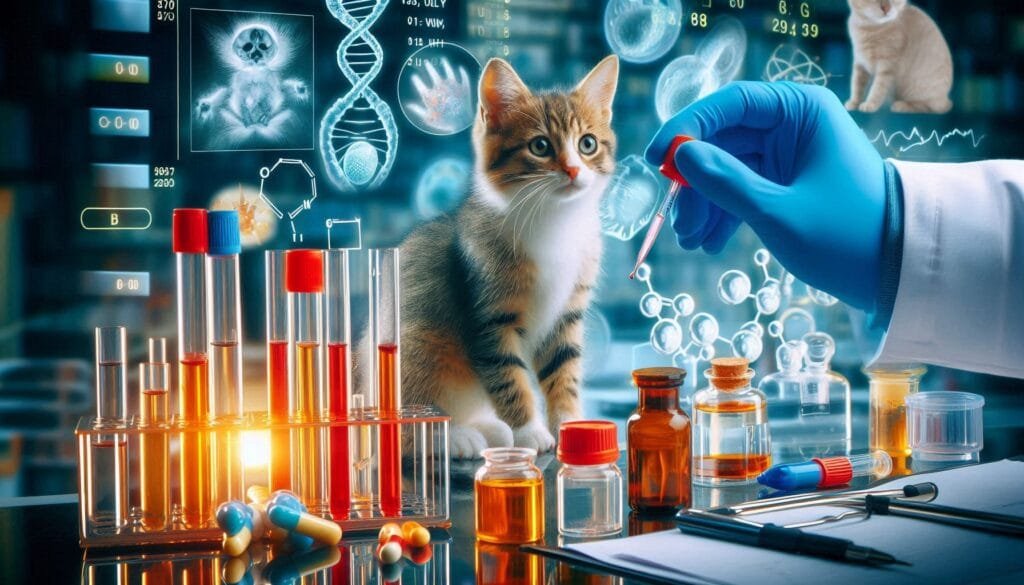Next-Generation Sequencing (NGS) in Veterinary Medicine

Introduction to NGS in Veterinary Medicine
Next-Generation Sequencing (NGS) has revolutionized many fields, including veterinary medicine. This technology allows for rapid and detailed analysis of genetic material. As a result, it enhances our understanding of animal health, disease diagnostics, and treatment options. In this article, we will explore the applications, advantages, challenges, and future prospects of NGS in veterinary medicine.
What is Next-Generation Sequencing?
Understanding NGS Technology
Next-Generation Sequencing refers to a group of advanced technologies that enable the sequencing of DNA and RNA much faster and cheaper than traditional methods. Unlike Sanger sequencing, which sequences one fragment at a time, NGS can sequence millions of fragments simultaneously. This capability makes it a powerful tool for various applications in veterinary medicine.
How NGS Works
NGS involves several steps:
- Sample Preparation: DNA or RNA is extracted from the sample (e.g., blood, tissue).
- Library Preparation: The extracted material is fragmented and tagged with unique identifiers.
- Sequencing: The library is loaded onto a sequencer that reads the sequences.
- Data Analysis: The resulting data is analyzed using bioinformatics tools to interpret the results.
For a more detailed explanation of the NGS process, you can refer to Illumina’s NGS Overview.
Applications of NGS in Veterinary Medicine
Next-Generation Sequencing has numerous applications in veterinary medicine. Below are some key areas where NGS is making a significant impact.
1. Diagnostic Advancements
Pathogen Identification
One of the primary uses of NGS in veterinary diagnostics is pathogen identification. Traditional methods often require prior knowledge of potential pathogens. However, NGS can detect multiple pathogens simultaneously without this prior knowledge. This capability is crucial for diagnosing mixed infections.
For example, researchers used NGS to identify pathogens in cases of unexplained illnesses in dogs and cats. You can read about such studies in Veterinary Microbiology.
Genomic Epidemiology
NGS also plays a vital role in genomic epidemiology. By providing whole genome sequences, it helps track the origin and spread of infectious diseases. This information can guide public health responses and vaccination strategies.
A notable example includes tracking the spread of canine parvovirus across different regions using genomic data. More details on this topic can be found at Nature Reviews Microbiology.
2. Understanding Disease Dynamics
Infectious Diseases
NGS enhances our understanding of various infectious diseases affecting animals. It allows researchers to study the genetic makeup of pathogens and understand their virulence factors. This knowledge aids in developing effective vaccines and treatments.
For instance, studies on feline immunodeficiency virus (FIV) have benefited from NGS technologies. Researchers have been able to analyze viral evolution and resistance mechanisms through genomic sequencing. You can explore these findings further at PLOS Pathogens.
Genetic Disorders
NGS is also instrumental in identifying genetic disorders in animals. By sequencing the genomes of affected animals, veterinarians can pinpoint mutations responsible for hereditary conditions.
For example, researchers have identified genetic mutations linked to hip dysplasia in dogs using NGS techniques. This information helps breeders make informed decisions to reduce the incidence of this condition. More insights can be found at The Journal of Heredity.
3. Personalized Medicine
Oncology
In veterinary oncology, NGS facilitates personalized treatment plans for cancer patients. By identifying specific mutations within tumors, veterinarians can tailor therapies to target these alterations effectively.
For instance, targeted therapies for osteosarcoma in dogs have emerged from genomic studies that identify key mutations driving tumor growth. You can read more about this development at Veterinary Clinics: Small Animal Practice.
4. Microbiome Analysis
The analysis of animal microbiomes using NGS has gained traction recently. Understanding microbial communities within an animal can provide insights into health and disease states.
For example, studies have shown how gut microbiomes influence overall health in dogs and cats. By analyzing these microbial populations through NGS, researchers aim to develop probiotics or dietary interventions that promote better health outcomes.
Advantages of NGS
Next-Generation Sequencing offers several advantages over traditional methods:
Speed and Efficiency
NGS provides rapid results compared to conventional sequencing techniques. This speed is crucial during disease outbreaks when timely interventions are necessary.
Cost-Effectiveness
As technology advances, the costs associated with NGS have decreased significantly. This reduction makes it more accessible for veterinary practices and research institutions.
Comprehensive Analysis
NGS allows for comprehensive analysis of entire genomes or metagenomes. This capability enhances our understanding of complex biological systems and interactions between hosts and pathogens.
Challenges Facing NGS Adoption
Despite its advantages, several challenges hinder the widespread adoption of NGS in veterinary medicine:
Technical Complexity
The technical complexity involved in setting up and operating NGS platforms can be daunting for some veterinary practices. Training personnel to handle these technologies requires time and resources.
Data Interpretation
Interpreting the vast amounts of data generated by NGS poses another challenge. Veterinary professionals may need additional training or support from bioinformaticians to make sense of the results accurately.
Regulatory Issues
Regulatory frameworks surrounding genetic testing and sequencing vary by region and may slow down the adoption process for certain applications.
Future Prospects for NGS in Veterinary Medicine
The future looks promising for Next-Generation Sequencing in veterinary medicine:
Integration into Routine Diagnostics
As technology becomes more user-friendly and cost-effective, we can expect greater integration of NGS into routine diagnostics across veterinary practices.
Research Advancements
Ongoing research will likely uncover new applications for NGS in various areas such as zoonotic diseases, population genetics, and conservation efforts for endangered species.
Enhanced Collaboration
Increased collaboration between veterinarians, researchers, and bioinformaticians will drive innovation and improve our understanding of animal health through genomics.
Conclusion
Next-Generation Sequencing represents a significant advancement in veterinary medicine. Its applications span diagnostics, disease understanding, personalized treatments, and microbiome analysis. While challenges remain regarding technical complexity and data interpretation, ongoing advancements promise to enhance its adoption across veterinary practices worldwide.
For more pearls of Vets Wisdom:
Muscle Tissue





Responses